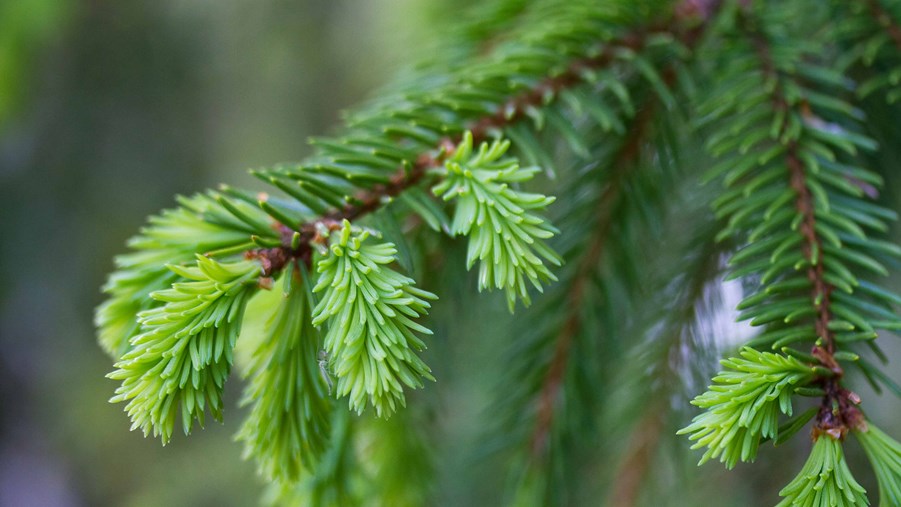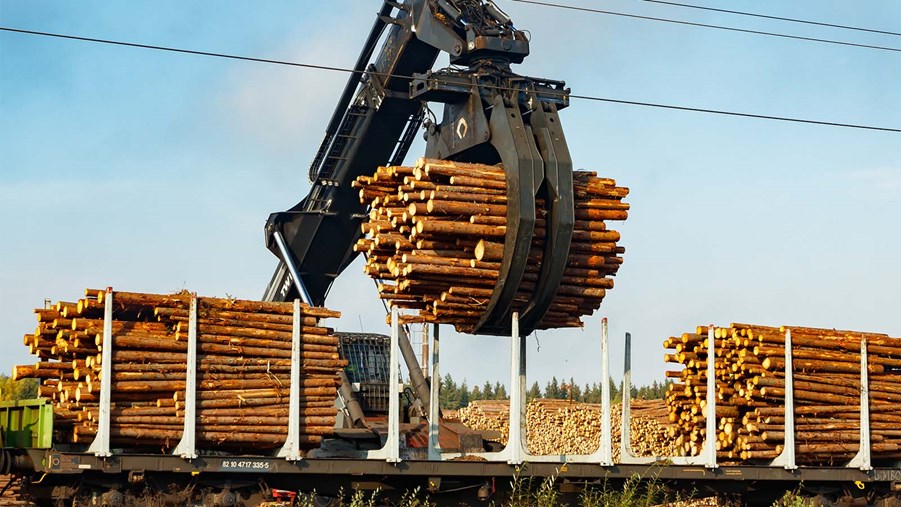
If Sweden and Europe are to achieve the EU’s new climate goals, it is vital that forests grow better.
“If we want maximise climate benefits, we must invest in increased growth in our forests,” says Jan Åhlund from Holmen Skog, one of Sweden’s largest forest owners.
In the past century, the amount of wood in Swedish forests has doubled, largely due to a replanting requirement. Today, 70 per cent of Sweden’s surface area is covered by forest. In the past decade, average annual forest growth has been around 110 million cubic metres, while around 96 million cubic metres of forest are harvested. The hot summer of 2018, with its severe drought, caused a dip in this trend, but forest growth has remained high in the years since.
However, to achieve longer-term goals, continued concerted work on carbon storage is still needed.
“And to do that, what we really need to do is to increase growth in our forests. If we want to maximise climate benefits, forests should not get really old,” says Jan Åhlund, Communications Director and formerly Forestry Director at Holmen Skog.
Key measures to increase growth
The forest industry’s major challenge going forward is how to achieve the necessary growth in forests, while additional set-asides will further reduce land available for production. The Swedish Forestry Industry’s Future Roadmap, which includes a series of sustainable development pledges, describes how climate benefit can be increased 30 per cent by 2040. The roadmap also sets out how carbon sequestration must increase in Sweden’s forests – and this is entirely dependent on increased tree growth.
“Holmen started work on this early: we conducted a study into [forest] growth back in 2004. The study projected potential growth of 25 per cent by 2040. We use this as a target for the various growth-enhancing measures that we’re currently working on. The greatest potential for increased growth is in rejuvenation work with the use of bred plants, ensuring that the right plant of the right tree species is in the right place and then making every effort to ensure that new plants survive the first few years,” explains Åhlund.

Plants
Photo: Friggesund
Breeding better trees
Sweden has conducted forest tree breeding ever since the 1940s; most spruce and pine seedlings that are planted today are the product of selective breeding. Forest tree breeding means that trees with favourable characteristics are cross-fertilised and tested in nurseries. These characteristics improve with each new generation of trees. This is, however, a slow process, because improved seed material has to grow as seedlings in a seedling farm before they can start producing seeds that can then be used in nurseries.
“Today, forestry uses almost exclusively bred plant material. Due to climate change and other risks, we’ve become more careful about how we select tree species for each planting. We can’t force nature. We need to choose the type of tree that has the best chances of survival and grow well at any given site,” says Åhlund.
Fertilising forests
Using fertiliser is another way of enhancing growth rates. The nutrient that trees lack most in Sweden is nitrogen. By spreading nitrogen fertiliser on forest land, it is possible to quickly increase the growth of the trees. Results are immediate and wear off after about 10 years. Under normal conditions, forest growth and carbon dioxide uptake increases by 10 to 20 tonnes a hectare over a 10-year period after fertilisation.
“Today, fertiliser is used very little in forestry compared to agriculture. There’s potential here [to increase the use of fertiliser], but fertiliser is expensive and may require a proper advisory effort if it is to take place at scale. It’s also important to fertilise in the right way and on the right land, to protect biodiversity and reindeer husbandry,” says Linda Eriksson, Forest Director, Swedish Forest Industries.
“From a societal perspective, if we are to increase the carbon sink [effect of our forests], then perhaps we should fertilise younger forests to a greater extent instead of 10 years prior to harvest, as is currently the case,” says Eriksson.
Extensive damage caused by game
Another important measure to increase growth is to address game damage, as the imbalance between the size of groups of game and the availability of food results in considerable grazing damage to young forests, (primarily pine). Although biologically important and grazing tree species such as rowan, aspen, willow and oak also struggle to develop into adult trees in many places due to heavy grazing pressure.
A report published by Sweden’s Viltskadekommission, (Wildlife Damage Commission), in 2023 puts socio-economic losses caused by lost forest growth and unrealised breeding growth at SEK 12 billion a year.
“In the north [of Sweden] it’s elk that eat new forest growth, and in the south, it’s mainly deer. The Swedish Forestry Agency and the Swedish Environmental Protection Agency have agreed a target within the framework of Sweden’s elk management system, which states that 70 per cent of trees to be used as timber should not be affected by game grazing. In large parts of the country, the damage is considerably greater than that,” explains Åhlund.
The elevated effects of grazing also have a significant negative impact on the climate.
“Current grazing levels result in the loss of trees’ potential carbon dioxide uptake corresponding to the total amount of emissions caused by all transport in the whole of Sweden,” says Åhlund.



